The Snapdragon 8s Gen 3 was announced in March 2024 as a flagship chipset. It features a high-performance octa-core CPU with up to 3GHz of peak speed and a capable Adreno GPU that does the heavy lifting when it comes to gaming and other graphics-related tasks. This Qualcomm chip sits below the 8 Gen 3 and has benchmark scores pretty close to the 8 Gen 2.
On the other hand, the Snapdragon 7 Gen 3 is a mid-range processor that arrived a few months before the 8s Gen 3. It also has an octa-core CPU but not as powerful as the 8s Gen 3, and so is the GPU. While it’s pretty obvious that the Snapdragon 8s Gen 3 is superior, the real question is—how big is the performance gap? To find the answer, we tested them on multiple benchmarks. You can see the result below.
Snapdragon 8s Gen 3 vs 7 Gen 3: Benchmark comparison
Note: The tests were conducted on the Poco F6 (powered by Snapdragon 8s Gen 3) and OnePlus Nord CE 4 (powered by Snapdragon 7 Gen 3).
AnTuTu comparison
When it comes to raw AnTuTu performance, the Snapdragon 8s Gen 3 absolutely dominates the 7 Gen 3. Scoring over 1.5 million points, the 8s Gen 3 nearly doubles the overall performance of the 7 Gen 3, which comes in at 819,655.
The CPU and GPU differences are especially stark — 391,859 vs 269,334 for CPU, and a massive 517,257 vs 256,584 for GPU. That means the 8s Gen 3 isn’t just a little faster — it’s in a completely different league for gaming and multitasking. It also pulls far ahead in memory and UX performance, making it a clear winner in every metric.
| SD 8s Gen 3 | SD 7 Gen 3 | |
|---|---|---|
| AnTuTu score | 1,505,656 | 819,655 |
| CPU | 391,859 | 269,334 |
| GPU | 517,257 | 256,584 |
| Memory | 325,777 | 129,961 |
| UX | 270,763 | 163,776 |
Geekbench comparison
On Geekbench, the Snapdragon 8s Gen 3 continues to flex its muscle with a single-core score of 1,932 and a multi-core score of 4,986. In comparison, the Snapdragon 7 Gen 3 trails behind with 1,154 and 3,018 in the same tests.
This shows that the 8s Gen 3 offers a 67% boost in single-core and a 65% boost in multi-core performance. So, whether you do editing, gaming, or any processing-intensive task, the 8s Gen 3 should feel significantly faster.
| SD 8s Gen 3 | SD 7 Gen 3 | |
| Single core | 1,932 | 1,154 |
| Multi core | 4,986 | 3,018 |
3DMark Wild Life Stress Test
In the 3DMark Wild Life Stress Test, the Snapdragon 8s Gen 3 delivers the best loop score of 11,439, showing far superior peak GPU performance compared to the Snapdragon 7 Gen 3, which tops out at 5,451. However, the 8s Gen 3 also shows a noticeable dip in sustained performance with stability of 77.6%, while the 7 Gen 3 maintains an impressive 99.6% stability, with its lowest loop score barely dropping from the best.
| SD 8s Gen 3 | SD 7 Gen 3 | |
| Best loop score | 11,439 | 5,451 |
| Lowest loop score | 8,881 | 5,426 |
| Stability | 77.6% | 99.6% |
Snapdragon 8s Gen 3 vs 7 Gen 3: Key differences that matter!
CPU
Both Qualcomm chips significantly differ in CPU architecture and design. For instance, the Snapdragon 8s Gen 3 has a 1+4+3 core configuration, featuring one Cortex-X4 prime core, four Cortex-A720 performance cores, and three Cortex-A520 efficiency cores.
On the other hand, the Snapdragon 7 Gen 3 uses a 1+3+4 core design, with one Cortex-A715 high-performance core, three Cortex-A715 performance cores, and four Cortex-A510 efficiency cores. Clearly, the 8s Gen 3 has superior CPU cores, and they run at higher speeds.
Additionally, this chip uses a newer instruction set, ARMv9.2-A (versus ARMv8.6-A), that brings improvements to security, AI, and performance efficiency. The 8s Gen 3 also has a larger cache memory for improved performance.
GPU
The Snapdragon 8s Gen 3 has an Adreno 735 GPU, and the 7 Gen 3 has an Adreno 720. While both are based on the same Adreno 700 architecture, they have significant differences.
The Adreno 735 GPU (on the 8s Gen 3) runs at a higher frequency and features larger shading units, total shaders, memory bandwidth, and significantly higher floating point operations per second (FLOPS). These contribute to superior gaming performance on the 8s Gen 3. Additionally, the chip supports hardware-accelerated ray tracing, which further enhances the gaming experience.
Camera
Both chips have triple Spectra ISP, but the 8s Gen 3 has a higher bit ISP, resulting in better dynamic range and richer colors. It also has a Cognitive ISP that enables real-time semantic segmentation for both images and videos. This means the chip can identify and individually optimize up to 12 distinct layers within an image or video frame.
The Snapdragon 8s Gen 3 also benefits from AI enhancements, such as AI-based auto-exposure, AI-based auto-focus, and AI-based face detection. The chip also features Locally Motion Compensated Temporal Filtering (MCTF), Engine for Visual Analytics 3.0, and Snapdragon Low Light Vision (LLV) on top of the 7 Gen 3 camera features.
Both chipsets support up to 200MP cameras and allow up to 4K video recording. However, the 8s Gen 3 supports multi-frame noise reduction (MFNR) and zero shutter lag (ZSL) at higher megapixels.
Connectivity
The two Qualcomm chips also offer notable differences in connectivity. The 8s Gen 3, for instance, features an X70 5G modem with up to 6.5Gbps of peak download speed, while the 7 Gen 3 (with X63 5G modem) peaks at 5Gbps.
The Snapdragon 8s Gen 3 also brings higher network speeds on a Wi-Fi connection. It allows up to 5.8Gbps speed on a Wi-Fi 7 connection, whereas the 7 Gen 3 supports Wi-Fi 6E with a maximum speed of 2.9Gbps. The 8s Gen 3’s Wi-Fi 7 support allows reliable and fast connectivity even in crowded places.
| SD 8s Gen 3 | SD 7 Gen 3 | |
|---|---|---|
| Announced | March 2024 | November 2023 |
| Manufacturing | 4nm (TSMC) | 4nm (TSMC) |
| CPU | 1 x 3GHz — Cortex-X4 4 x 2.8GHz — Cortex-A720 3 x 2GHz — Cortex-A520 | 1 x 2.63GHz — Cortex-A715 3 x 2.4GHz — Cortex-A715 4 x 1.8GHz — Cortex-A510 |
| GPU | Adreno 735 Ray tracing support | Adreno 720 |
| NPU | Hexagon NPU | Hexagon NPU |
| Memory | LPDDR5x, up to 4.2GHz | LPDDR5, up to 3.2GHz |
| Camera | Spectra triple ISP (18-bit) Up to 200MP single camera Up to 4K video recording Semantic segmentation support | Spectra triple ISP (12-bit) Up to 200MP single camera Up to 4K video recording |
| Connectivity | Snapdragon X70 5G modem Downlink: 6.5Gbps Qualcomm FastConnect 7800 Wi-Fi 7 (peak speed: 5.8Gbps) Bluetooth 5.4 | Snapdragon X63 5G modem Downlink: 5Gbps Qualcomm FastConnect 6700 Wi-Fi 6E (peak speed: 2.9Gbps) Bluetooth 5.4 |
Snapdragon 8s Gen 3 phones:
- Poco F6 (review)
- Realme GT 6
- iQOO Neo 10R
- Motorola Edge 50 Ultra
- Xiaomi 14 Civi (review)
- Honor 200 Pro (review)
Snapdragon 7 Gen 3 phones:

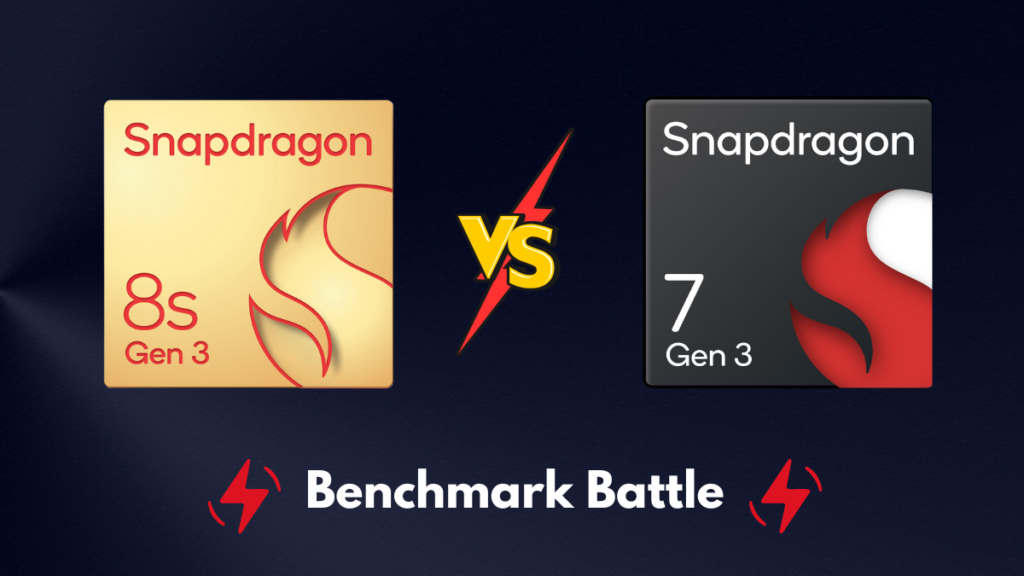
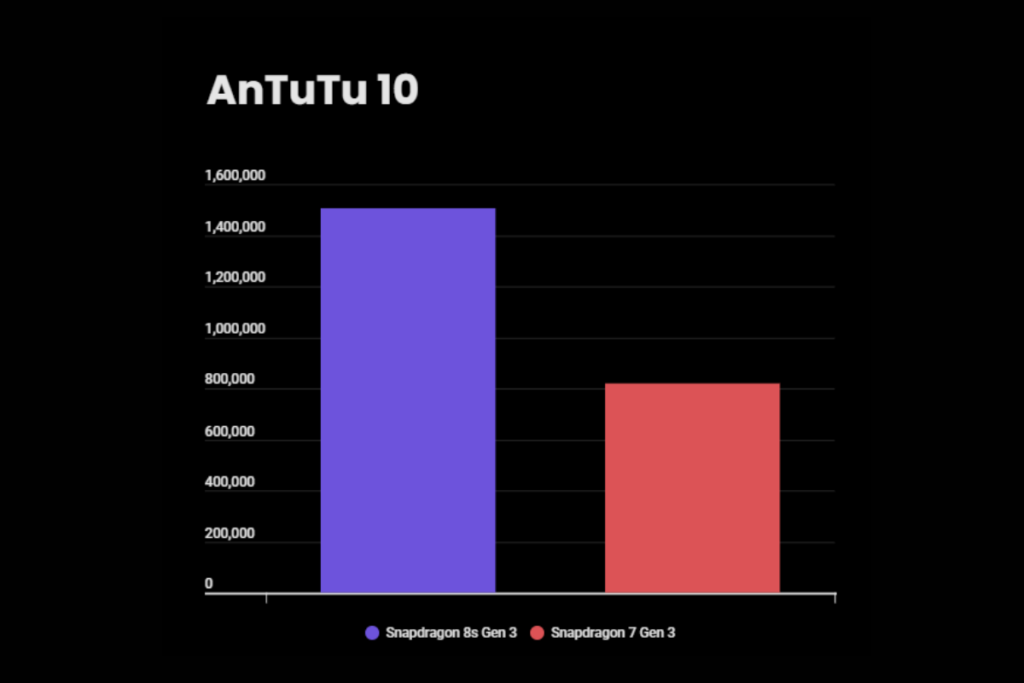
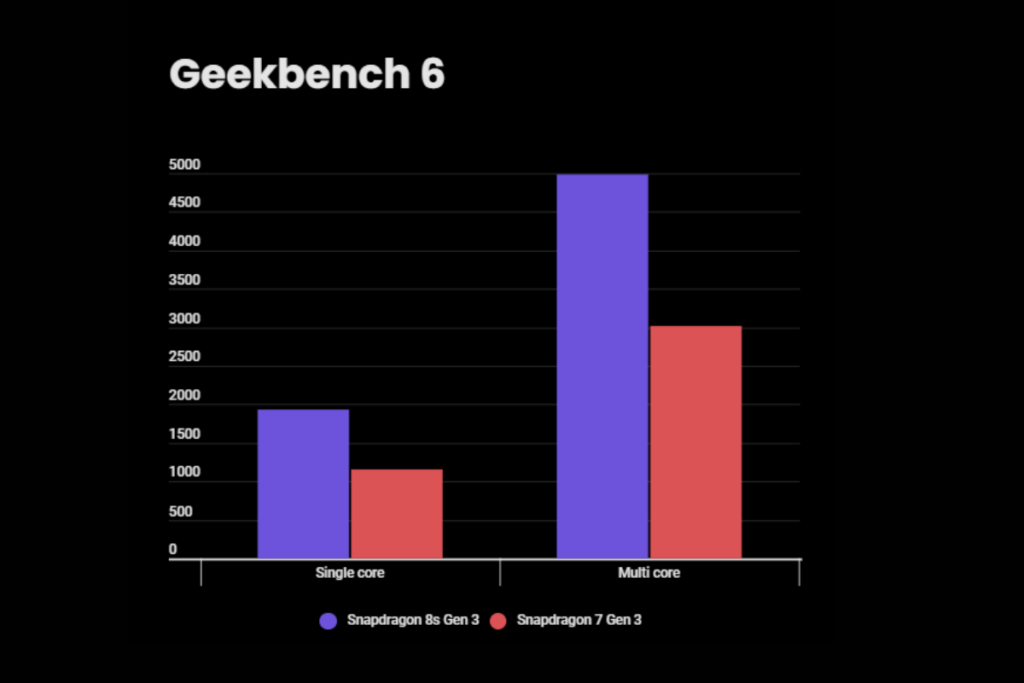
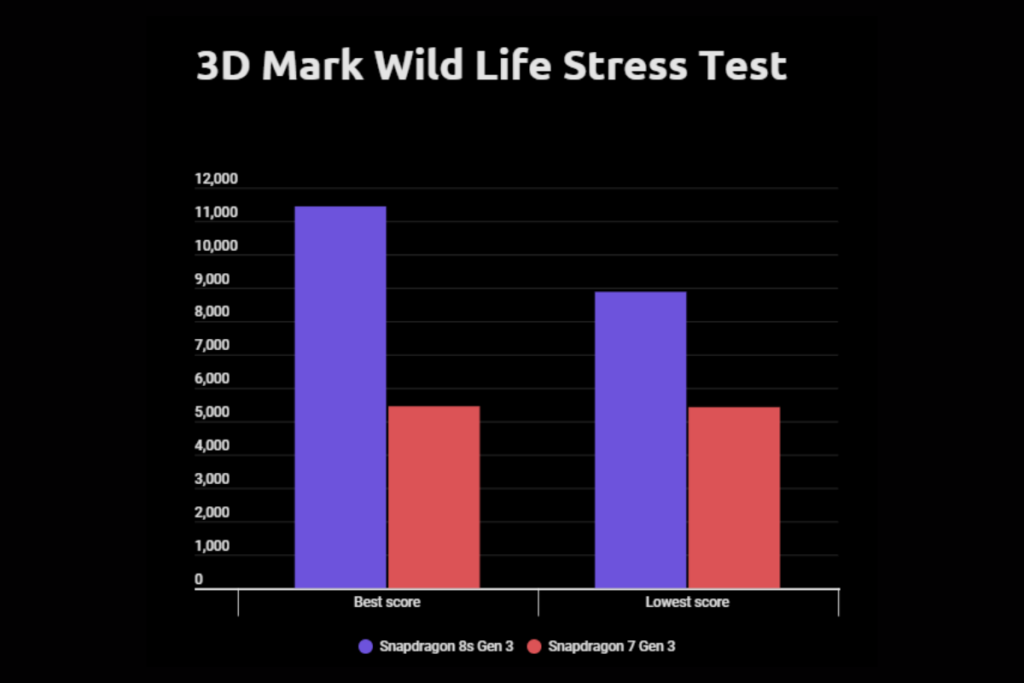


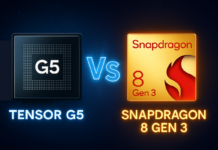




Comments